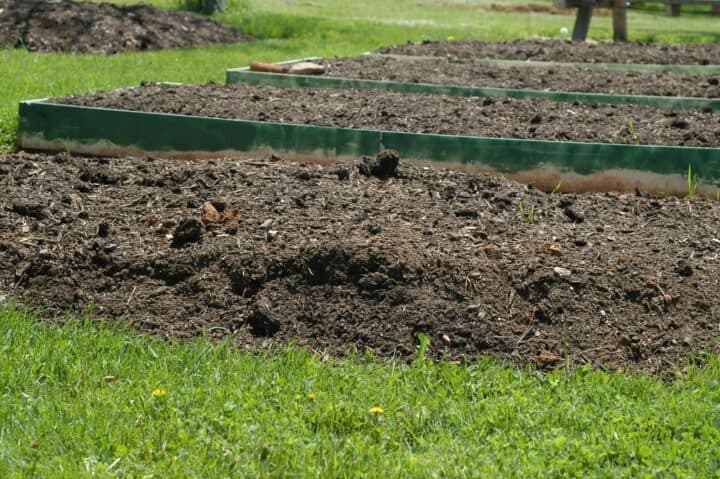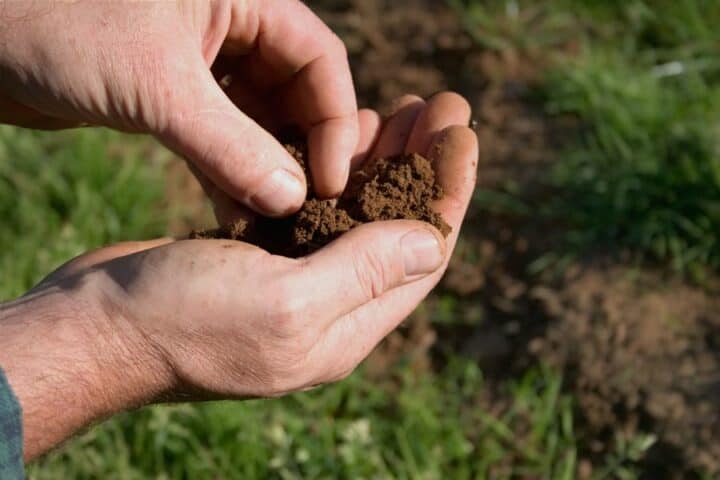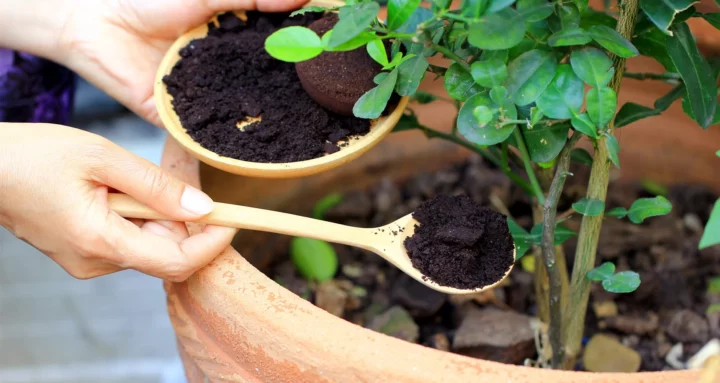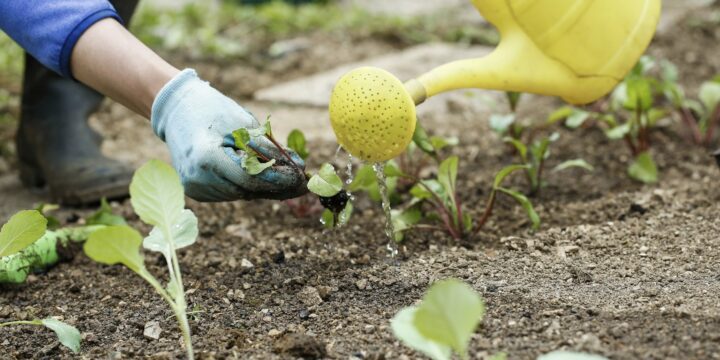Have you worked incredibly hard in your garden, and now you don’t know what to do with old garden soil? Don’t worry, you will find exactly how you can reuse old garden soil later in this article.
Old garden soil can be incredibly useful if you’re no longer using it to grow plants. Old garden soil will have many uses including changing plants, potting soil, and more.
In this article, you’ll get to know all about what to do with old garden soil, what makes garden soil old, the potential risks of using old garden soil, and a lot more. Continue reading to know all the answers.
Is your garden soil getting old?
When the temperature drops, flowers start fading, and soil starts growing old, it is time to replace the soil. While it is tempting to keep the old soil, but you need to replace it. Keeping your old soil can be problematic and pricey, especially when you have a lot of plants. The lightweight mix of peat, compost, and perlite will not last forever.
Moreover, plants use up all the nutrients in it as they grow, and old soil can lack nutrients. After a while, the mix can get compacted and fill the roots. Sometimes, weeds, pests, and diseases can also take up residence. So, what to do with old garden soil? There are certain ways that you can use the old garden soil.
What to do with old garden soil?
#1 – Revive it by using fertilizers
The best thing that you can do with old garden soil is to simply perk it up by using an infusion of fresh, organic materials and nutrients. You will have multiple choices when you’re adding fertilizers to old garden soil. Look for standard processed products that come in granular or liquid form. These will come in a specific quantity and a blend of nutrients present. You can easily measure them, dilute them in water, and then apply them to the garden. These products will come in 3 different numbers on the package, called “NPK numbers”. It stands for nitrogen, phosphorus, and potassium.
The other choice will be to use natural materials, although they won’t be as precise. Two classic and effective natural fertilizers would be compost and animal manure. Both of them add organic material and a whole plethora of nutrients. All you should remember is that any manure will have to be aged for around 4-5 months before using it. Otherwise, it’ll be too high in nitrogen and can easily kill your flowers and plants.

Once you’ve taken your soil tests and see what you might need, any of the products can be found at landscaping stores or in a typical garden.
#2 – Recycle it as potting soil
Although houseplants require nutrients, it’ll be easier to manage a small dose of fertilizer when dealing with potted plants indoors. Taking your old garden soil inside can be an ideal option once you fertilize it first. Even tired, old soil can hold a lot of pathogens or insect eggs. You can easily sterilize old garden soil in the oven, and it’ll be very easy to do so.
Simply take some shovelfuls of earth and pick out large rocks or sticks. Add some water such that it is damp. Simply spread it out around 3 inches deep in a baking pan and then cover it up with aluminum foil. Poke a hole in the foil and then stick an oven-safe thermometer, but ensure that the sensor is in the dirt.
Set the oven to around 180° F but do not start the timer until the dirt registers at the temperature. Keep it at the heat for around half an hour and remove it from the oven for cooling on its own.
Now, you can use the old garden in your house far more safely. While it might be low in nutrients, a houseplant fertilizer will take care of that.
#3 – Use it for changing plants
If you aren’t inclined to do a great deal of work, you can change up whatever you’re growing. Plans that do well in poor soil are the types of creeping cover plants such as sedum or bugleweed. Larger vines like Virginia creepers also do well in old garden soil.
A few geraniums will also give you decent flowering options. You could also go all the way and move the entire flowering bed. Use the area of old soil for an outdoor sculpture or even a new water feature.
At what point is garden soil considered old?
This is a complex question, as you should be specific about age when talking about garden soil. The problem here is not a matter of how much time has passed, but rather how long it has grown in that spot without new fertilizers added. In simple words, age will not matter to an extent as nutrient content will. Soil that is being used to grow heavy feeding plants for a while without any amendments will be exhausted. The practice of fruiting vegetables like tomatoes or flowers will produce a lot of blooms. Roses and petunias are well known for being heavy feeders.
When talking about nutrients and minerals instead of age, it can be tricky to figure out where your soil is. At least not when you’re simply looking at it.
The first sign that garden soil is old is that plants aren’t doing as well as expected. Another sign would be that it has been many years since you have done something to improve the soil. Once you notice that there are problems, there would be time to do a little investigating. If you’re worried about the nutrient content of your soil, you should get a digital test kit. This digital soil test kit will let you know what you’re dealing with. They aren’t complicated, and you won’t require a degree in chemistry to use them. Everything will be color-coded and convenient to use.
Some kits will be targeted toward a particular nutrient. For better investigating, you could get a larger product that allows you to test more compounds. This way, you’ll be able to see the entire spectrum of the soil’s contents. You should look for potassium, nitrogen, calcium, and magnesium. Moreover, check for the pH levels while you’re testing. Having a pH of 7 would be best, as it is relatively neutral. If it goes lower, the soil will start getting acidic.

You can simply follow the instructions mentioned in the kit. However, there is a common way these tests work. For each sample, you will require a few tablespoons of soil and distilled water. In a container, mix the taken soil with water and allow it to sit for a while. Once the dirt settles, simply add a testing reagent and then see the color the water turns into. Check the chart to compare your samples, as it’ll tell you which of the nutrients you’re lacking. Some kits will use a paper dip-strip instead. The overall principle will remain the same. All you have to do is dip the tester in the soil-water mixture and see which color it turns to.
Deal with the risks of reusing old garden soil
There are two primary ways that reusing old garden soil can put your garden at risk.
- Old garden soil will sometimes feature pathogens – bacteria, viruses, fungi, and other organisms that carry diseases. These pathogens could cause the container plants to get sick and die.
- Old garden soil will be deficient in the minerals that your plants require. This can easily cause the plants to catch diseases and die.
Reduce the risks of using old garden soil
There are a few risks of using old garden soil. However, you can easily reduce those risks by using any of the simple strategies mentioned below.
#1 – Never reuse old garden soil from a pot that had diseases plants growing
The plant might be dead and gone. However, the pathogens and other problems present in the old soil will still remain. This will make it highly likely that the next plants using the same soil may sicken and die.
#2 – Pasteurize old, potting soil before you use it
Old garden soil that remains exposed to harmful elements harbors pathogens and insects. None of them are desirable when growing new plants. For killing off the harmful elements, you must bake the old soil in the sun. Firstly, empty the soil into a used, black plastic bag. After that, place those bags in a sunny location.
The same pasteurization process that takes place during regular composting occurs inside the bags. It happens as the temperatures in the mix rise and render the pathogens and other unwelcome elements harmless. Although you can put old soil in garbage cans or sealable buckets, garbage bags will be easy to drag around. Moreover, black plastic bags will hold heat well.
#3 – Fertilize the containers after planting
Exposure to elements will weather the soil while also leaching out nutrients. For countering this, you can apply fertilizers for assuring that the container plants are getting the needed nutrients. This will be very important if you’re using recycled old garden soil. This is the case because many essential minerals might be taken up by previous plants or leached out.

You can use a slow-release fertilizer that will last all growing seasons. Moreover, you can also apply liquid fertilizers every 2-3 weeks.
#4 – Water with rainwater will reduce salt buildup
Does the garden soil in your plants have white crusting on its surface? Then it might be suffering due to salt buildup, which could slow down plant development. For preventing this issue in the future, you should water the plants with rainwater. Rainwater normally comes with a lower salt content compared to tap water or well water. For reusing salty soil in containers, you shouldn’t. Simply add it to the compost pile. Moreover, if you want to use it in containers, you can cut it with 50% new potting mix.
#5 – Mix compost and potting mix into old garden soil
You can mix a bit of compost and new potting mix into old garden soil, especially if you have been using it for many years. Exposure to different elements will make the soil far more compact. By adding potting mix to the old garden soil, it’ll increase its fertility. Moreover, it’ll also make it far more friable while improving its ability to retain moisture. If you’ve been using the same garden soil for many years, it would be wise to create a 50-50 mixture. This 50-50 mixture should have half old and half new garden soil.
Conclusion
Thank you for reading. Hopefully, now you know a lot more about what to do with old garden soil, the potential risks of reusing the soil, how to know that the soil is old, and a lot more. Old garden soil eventually starts losing its nutrients and becomes unusable. You will then reach a situation where you’re asking yourself what to do with old garden soil. There are multiple routes to go. The easiest one would be to try and revitalize it with fertilizers. This will enrich the soil and make it possible to be used again. You can also use it as pot soil and grow other plants.
